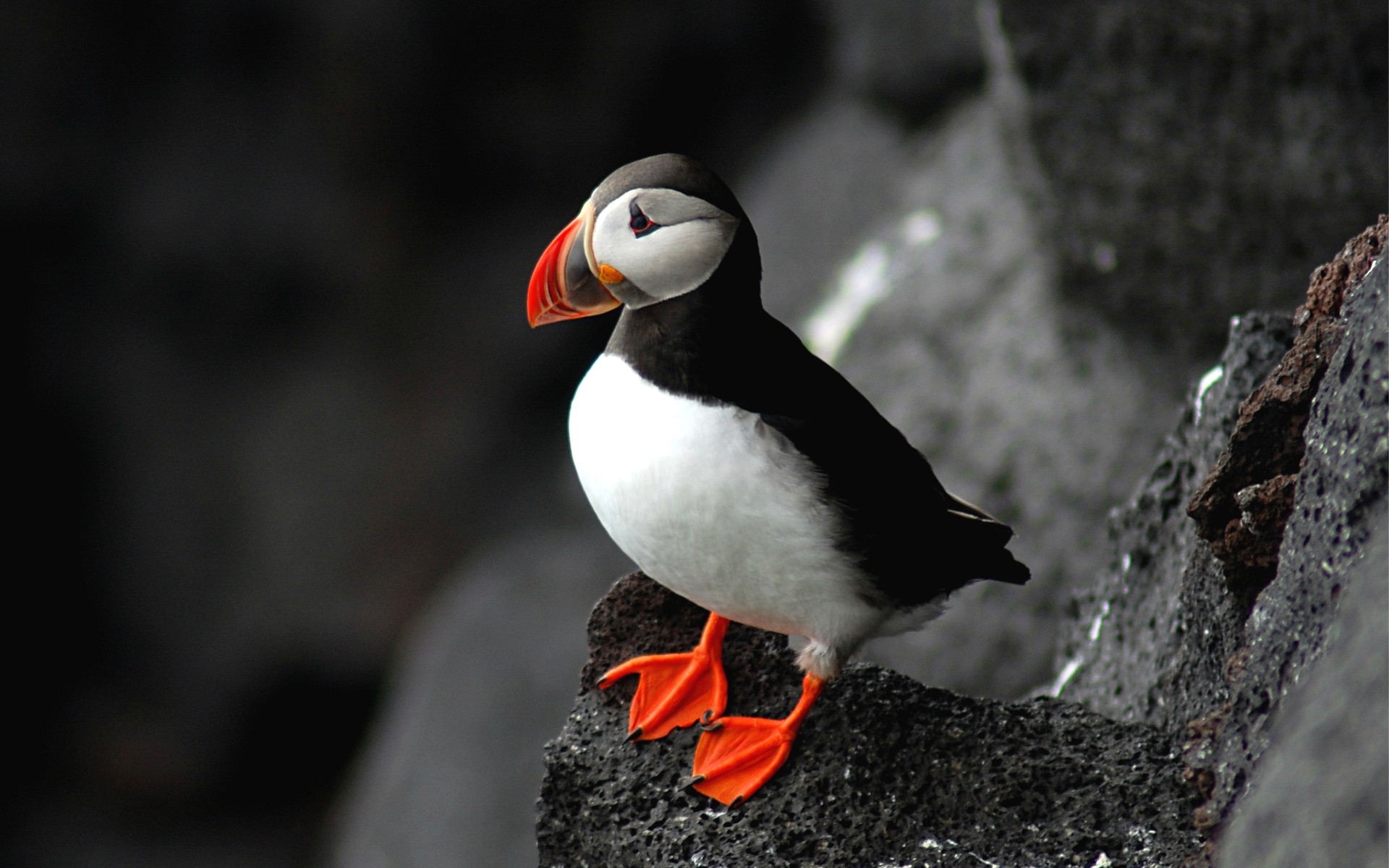

Puffins are a part of the Alcidae family, along with auklets, guillemots, murres, and murrelets. Tufted and horned puffins can be found in the North Pacific, primarily in Alaska, British Columbia, and Siberia. They spend the winter far at sea and are rarely seen from land until March. In the summertime, Atlantic puffins live among rocky bluffs in northern Europe and the North Atlantic. During the summer breeding season, tufted puffins have white faces with blonde “tufts” of feathers curling above the ear, from which they derive their name.

The tufted puffin differs from other puffin species in that its entire body is black, and it doesn’t have the characteristic white underside. The bird has a thin, black “horn” stretching upwards from the eye during the summer. Horned puffins weigh approximately 1.25 pounds and are about 14 inches in length. The horned puffin is the most widely recognized of Alaska’s seabirds, and is most frequently seen on the state’s souvenirs. Two species of puffin inhabit Alaska’s waters, namely the tufted puffin ( Fratercula cirrhata) and the horned puffin ( Fratercula corniculata). A number of the bill’s horny plates will shed after the breeding season, revealing a smaller, duller beak. A puffin’s beak size and color are affected by molting in late summer. Both horned and tufted puffins have reddish-orange bills with a yellow base.

Atlantic puffins have bills that are a vivid orange color, with a yellow-bordered crescent of dark blue at its base. Puffin beaks vary depending on the species. In winter, the cheeks of a puffin appear a dusky gray, though their other plumage is relatively unchanged. They have white underbellies and cheeks, with a black spread along their back, neck, and crown. Puffins are between 11.5 and 13.5 inches long with a wingspan of 21 to 24 inches. Early sailors referred to them as “sea parrots” due to their triangularly shaped beak, stocky body, short wings, and reddish-orange feet. Of these puffins, 914 successfully fledged.The most notable feature of the puffin is their large, brightly-colored bill. From 1973 to 1986, 954 puffins were moved from Great Island to Eastern Egg Rock. Young puffins around 10 to 14 days old were transplanted from Great Island, Newfoundland (where successful nesting had occurred and where around 160,000 pairs nest) to Eastern Egg Rock in Maine. This program was created to restore puffin populations back in to their historic nesting islands in the Gulf of Maine. In 1973, the National Audubon Society started Project Puffin. Atlantic puffins and their colonies are now protected, but they still face threats from climate change, such as warming the oceans and changes to their food availability. The population suffered substantial declines in the early 1900s due to unregulated egg collecting and hunting on the breeding colonies.

Globally, Atlantic puffin are considered a vulnerable species with a decreasing population trend.Īpproximately 350,000 to 400,000 puffins currently breed in eastern Canada, mostly in Newfoundland and Labrador. What is the Atlantic puffin's conservation status? A puffin can hold up to 61 fish in its bill at a time. Puffins swim along the surface of the water and dive to depths of up to 60 metres to hunt for food. Puffins feed on small fish, such as capelin, herring and a small amount of sandlance. In Canada, nesting usually occurs in April, and the first eggs are laid in May. Each year, they select the same mate and breeding site. They will nest in colonies, and make nests by digging a shallow burrow or hole. They can also be found in scattered colonies in Greenland and the eastern Canadian Arctic.Ītlantic puffins are seabirds and spend most of their lives at sea. They breed on islands and sea cliffs along the coasts of northwestern Europe, Iceland and northeastern North America. Puffins are found across the northern Atlantic Ocean. (Click on the image to enlarge) Where does the Atlantic puffin live?


 0 kommentar(er)
0 kommentar(er)
